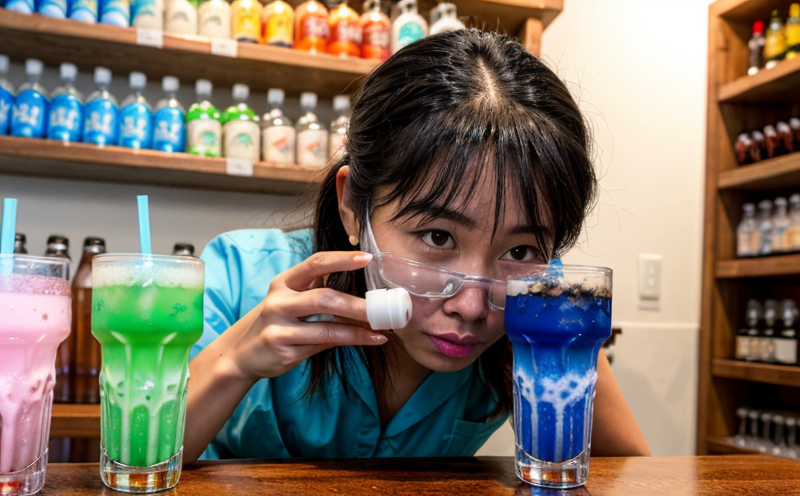FDA BAM Chapter 4 Yeast and Mold Testing in Beverages
The FDA’s Bacteriological Analytical Manual (BAM) is a comprehensive guidebook that provides standardized methods for the microbiological examination of foods. One critical chapter, Chapter 4, focuses on the isolation, identification, and enumeration of yeast and mold species specifically in beverages. This service ensures compliance with regulatory standards and helps maintain product integrity by detecting potential contamination early.
Yeast and mold are common contaminants found in beverage products that can affect flavor, texture, color, and shelf life. While some molds and yeasts are beneficial (e.g., those used in fermentation processes), others can cause spoilage or even health hazards. Therefore, it is essential to monitor their presence rigorously.
The FDA BAM Chapter 4 procedures involve several steps including sampling, sample preparation, inoculation of culture media, incubation periods, and finally, colony counts on selective media such as Rose Bengal Chloramphenicol Agar (RBCA) for yeast or PDA (Potato Dextrose Agar) for molds. These methods are designed to be both accurate and reproducible, ensuring consistent results across different laboratories.
Compliance with FDA BAM Chapter 4 is crucial not only because of regulatory requirements but also due to consumer safety concerns. By adhering strictly to these guidelines, manufacturers can demonstrate their commitment to quality control and ensure that their products meet the highest standards before reaching consumers.
In addition to meeting legal obligations, implementing FDA BAM Chapter 4 testing offers numerous advantages for beverage producers:
Why It Matters
Regulatory compliance is paramount in the food industry. Failure to adhere to established protocols can lead to recalls, fines, and damage to brand reputation. By conducting thorough yeast and mold testing as per FDA BAM Chapter 4 guidelines, companies not only meet these legal requirements but also enhance their operational efficiency.
The presence of excessive molds or yeasts in beverages can lead to off-flavors, cloudiness, sedimentation issues, and ultimately reduced product quality. Early detection through rigorous testing allows for prompt corrective actions such as process adjustments or raw material sourcing changes, thereby reducing waste and enhancing profitability.
Consumer trust plays a significant role in maintaining market share. Consistently producing safe, high-quality beverages builds long-term customer loyalty. Regularly performing FDA BAM Chapter 4 tests demonstrates a company’s dedication to providing top-notch products free from harmful microorganisms. This proactive approach reassures consumers about the safety and reliability of their favorite drinks.
Beyond mere compliance, implementing this testing regimen also supports innovation within R&D departments. Understanding how various factors influence yeast and mold growth can provide valuable insights into improving product formulations or developing new fermentation techniques.
Benefits
Implementing FDA BAM Chapter 4 testing brings several tangible benefits:
- Enhanced Product Quality: Early detection of contaminants helps maintain consistent product quality and shelf stability.
- Cost Efficiency: Preventive measures like these can save costs associated with potential recalls or legal actions.
- Increased Consumer Confidence: Demonstrating adherence to strict regulatory standards boosts consumer trust in the brand.
- Innovation Opportunities: Insights gained from testing can drive advancements in production processes and formulas.
- Operational Excellence: Streamlined workflows and improved resource management contribute to overall operational efficiency.
By embracing FDA BAM Chapter 4 procedures, businesses position themselves at the forefront of quality assurance practices. This commitment translates into a competitive edge in today’s demanding market landscape.
Quality and Reliability Assurance
The quality and reliability of FDA BAM Chapter 4 testing are underpinned by rigorous standards set forth by international bodies like ISO, ASTM, EN, IEC, etc. These organizations ensure that methodologies remain current with scientific advancements and industry best practices.
In our laboratory, we employ state-of-the-art equipment calibrated to meet the highest precision levels required for accurate yeast and mold counts. Our team of experienced microbiologists uses standardized techniques outlined in the FDA BAM Chapter 4 guidebook to conduct all tests. This ensures consistency and reproducibility of results across multiple batches or samples.
Data accuracy is paramount, so we maintain strict quality control measures throughout each step of the testing process—from sample collection to final analysis. Our laboratories are equipped with modern facilities that adhere strictly to Good Laboratory Practices (GLP), ISO/IEC 17025 accreditation criteria, and other relevant international standards.
Our commitment extends beyond just meeting regulatory requirements; we also strive to exceed expectations by providing timely reports supported by detailed documentation. Regular audits conducted by independent bodies further reinforce our dedication to maintaining the highest levels of accuracy and reliability in all tests performed.





